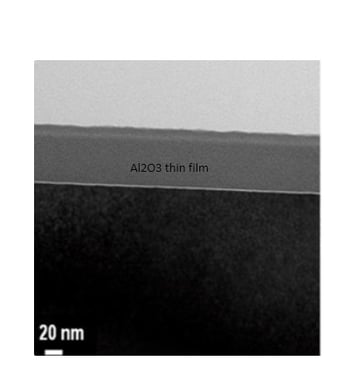Introduction to Nanoimprint Lithography

Explore the advantages, challenges, and potential of nanoimprint lithography in creating high-resolution nanoscale devices.
Overview of Nanoimprint Lithography
Nanoimprint lithography is a nanofabrication technique that enables the creation of intricate patterns and structures on the nanoscale. It involves the transfer of a patterned template onto a substrate using mechanical pressure and heat. This process allows for the replication of nanoscale features with high precision and resolution.
One of the key advantages of nanoimprint lithography is its simplicity and cost-effectiveness compared to other nanofabrication methods. The process does not require complex and expensive equipment such as electron beam lithography systems. Instead, it relies on a reusable template and a simple imprinting apparatus, making it suitable for large-scale manufacturing.
Another advantage of nanoimprint lithography is its versatility in creating various patterns and structures. The template used in the process can be designed to have different shapes and sizes, allowing for the fabrication of a wide range of nanoscale devices, including photonic devices, electronic circuits, and biomedical sensors.
Furthermore, nanoimprint lithography offers excellent resolution and pattern fidelity. The mechanical pressure applied during the imprinting process ensures that the pattern is transferred accurately onto the substrate, resulting in high-quality replicas. This level of precision is crucial for applications that require precise control over nanoscale features.
Overall, nanoimprint lithography is a promising nanofabrication technique that offers numerous advantages for the manufacturing of nanoscale devices. Its simplicity, cost-effectiveness, versatility, and high resolution make it an attractive option for various industries, including electronics, photonics, and biotechnology.
Enhanced Resolution and Precision
Nanoimprint lithography provides enhanced resolution and precision in the fabrication of nanoscale devices. The mechanical pressure applied during the imprinting process ensures that the pattern is transferred accurately onto the substrate, resulting in high-quality replicas with fine details. This level of precision is crucial for applications that require precise control over nanoscale features, such as integrated circuits and photonic devices.
Furthermore, nanoimprint lithography allows for the replication of patterns with sub-10 nm resolution, making it suitable for the fabrication of various nanoscale structures. The ability to create such small features opens up new possibilities in fields such as nanoelectronics, nanophotonics, and nanomedicine.
In addition to resolution and precision, nanoimprint lithography also offers excellent pattern fidelity. The template used in the process can be designed with high accuracy, ensuring that the replicated patterns are faithful to the original design. This reliability is essential for the consistent production of nanoscale devices with predictable performance.
Overall, the enhanced resolution and precision of nanoimprint lithography make it a valuable tool for the creation of high-quality nanoscale devices. Its ability to reproduce intricate patterns with fine details opens up new opportunities in various industries and research fields.
Cost Efficiency of Nanoimprint Lithography
Nanoimprint lithography offers significant cost advantages compared to other nanofabrication methods. Unlike techniques such as electron beam lithography, which require expensive equipment and consumables, nanoimprint lithography can be performed using a simple imprinting apparatus and reusable templates.
The simplicity of the process and the use of reusable templates reduce the overall manufacturing costs, making nanoimprint lithography an attractive option for large-scale production. The elimination of complex and costly equipment also simplifies the fabrication workflow and reduces the need for specialized training.
Furthermore, nanoimprint lithography enables the production of multiple replicas from a single template, increasing the efficiency and throughput of the manufacturing process. This scalability is particularly beneficial for applications that require the production of a large number of nanoscale devices, such as integrated circuits and sensors.
Overall, the cost efficiency of nanoimprint lithography makes it a compelling choice for industries and research institutions seeking high-quality nanoscale fabrication at a lower cost. Its simplicity, reusable templates, and scalability contribute to significant cost savings and increased productivity.
Challenges and Limitations of Nanoimprint Lithography
While nanoimprint lithography offers numerous advantages, it also faces certain challenges and limitations that need to be addressed.
One of the challenges is the potential for template wear and degradation. As the template is repeatedly used for imprinting, it can experience wear and tear, leading to a decrease in pattern fidelity and replication quality. This issue can be mitigated by using high-quality templates and implementing proper maintenance and cleaning procedures.
Another challenge is the difficulty in achieving uniform and defect-free imprints over large areas. Variations in temperature, pressure, and substrate properties can result in non-uniform imprints and the formation of defects, such as air bubbles and pattern distortions. Advanced process control techniques and optimized imprint parameters are necessary to overcome these challenges and ensure consistent and high-quality imprints.
Furthermore, nanoimprint lithography is limited by the availability of suitable template materials. The templates need to have high durability, chemical resistance, and stability at elevated temperatures to withstand the imprinting process. Research and development efforts are ongoing to explore new materials and fabrication techniques that can improve the performance and longevity of the templates.
Despite these challenges and limitations, nanoimprint lithography continues to be a valuable nanofabrication technique with significant potential for various applications. Ongoing research and advancements in process optimization and template materials are expected to further enhance its capabilities and address the existing limitations.





